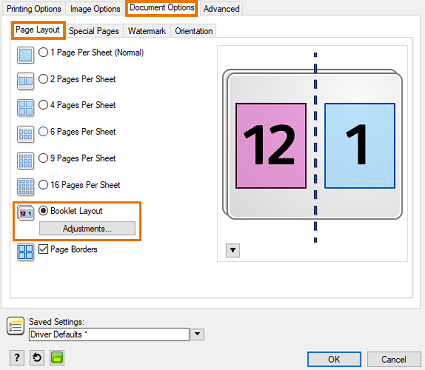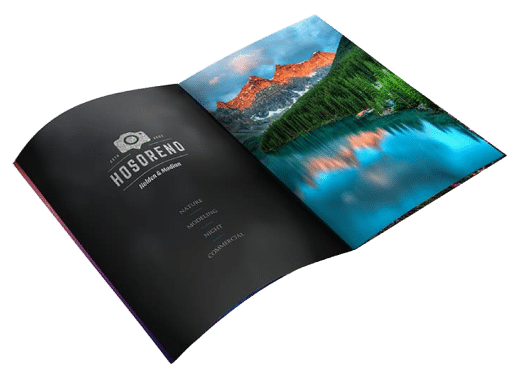Enhancing Trade Show Success with Strategic Booklet Printing
Enhancing Trade Show Success with Strategic Booklet Printing
Blog Article
The Necessary Overview to Comprehending Pamphlet Printing Options and Techniques
The procedure of brochure printing involves numerous factors to consider that can substantially affect the last item. From picking the ideal style and size to recognizing the subtleties of binding techniques, each option plays an essential duty. Furthermore, factors such as paper stock and printing techniques additional influence the efficiency of the booklet. As one navigates these alternatives, it comes to be crucial to understand just how they adjoin and what that implies for the general outcome.
Comprehending Brochure Dimensions and formats
When thinking about booklet printing, comprehending the numerous formats and dimensions readily available is vital for achieving the desired discussion. Booklets can be created in countless styles, consisting of saddle-stitched, spiral-bound, and perfect-bound, each offering distinctive advantages. Typical dimensions range from typical letter (8.5 x 11 inches) to smaller sized options like A5 (5.8 x 8.3 inches), permitting adaptability based upon web content and target audience.Selecting the proper dimension can affect both the design and reader engagement. Bigger dimensions could fit aesthetically driven content, while smaller layouts may be much more easy to use and mobile. In addition, the number of pages affects the option of binding technique, as thicker pamphlets may require stronger bindings. Ultimately, understanding these elements enables for a much more customized approach, making sure that the last item straightens with the intended message and aesthetic, improving the general performance of the interaction.
Picking the Right Paper Supply

Binding Approaches: Options and Factors To Consider
When it comes to binding techniques for brochures, numerous alternatives are offered, each with unique benefits. Saddle stitch binding offers an economical remedy for thinner pamphlets, while perfect binding methods supply an even more polished look for thicker publications. Wire-O binding stands apart for its toughness and convenience of usage, making it perfect for files that call for adaptability.
Saddle Stitch Binding
Saddle stitch binding offers a useful and affordable service for putting together brochures, making it a prominent option among authors and businesses. This binding approach entails folding sheets of paper in fifty percent and stapling them along the fold line, creating a organized and cool look. Normally ideal for pamphlets with a reduced web page count, saddle stitching is ideal for magazines, pamphlets, and instructional materials. The simpleness of this method enables fast production and is frequently favored for brief runs or marketing items. Nevertheless, it is necessary to note that saddle stitch binding might not be suitable for thicker booklets, as the back may not stand up under boosted weight. In general, it remains a reliable alternative for numerous printing tasks.
Perfect Binding Methods
Perfect binding is an extensively utilized strategy that offers a polished and expert coating to publications and pamphlets. This approach includes gluing the web pages together at the back using a solid adhesive, enabling a clean side and the capability to hold a bigger number of web pages compared to saddle sewing. Perfect binding is specifically appropriate for thicker pamphlets, such as magazines and annual records, where a sturdy, flat back is preferred. Furthermore, it uses the choice for a published cover that can be developed to improve aesthetic appeal. Factors to consider such as web page matter, paper weight, and the intended use of the booklet must be taken right into account, as they can influence resilience and general high quality.
Wire-O Binding Alternatives
Wire-O binding, understood for its longevity and flexibility, offers an outstanding choice for brochures that require simple page turning and a professional appearance. This binding method uses a series of steel loopholes that hold web pages firmly, permitting them to lie flat when open. It is especially suitable for presentations, manuals, and brochures because of its robust nature. Wire-O binding is available in numerous shades and diameters, suiting various web page counts and densities. In addition, it permits the incorporation of tabs and covers, boosting the pamphlet's total aesthetic. Considerations for Wire-O binding include the selection of wire color, the dimension of the loops, and the extent of personalization desired, every one of which can exceptionally influence the end product's appearance and performance.
Digital vs. Offset Printing: Which Is Best for You?
When selecting a printing approach for brochures, understanding the distinctions in between digital and counter printing is vital. Digital printing utilizes modern-day technology to produce high-grade prints swiftly and affordably, making it excellent for short runs or projects calling for quick turn-around times. It enables customization, supplying the capability to print on-demand with minimal waste.In comparison, offset printing is a standard method that masters producing huge quantities with constant top quality. It involves transferring ink from a plate to a rubber blanket, after that to the paper, which causes dynamic shades and precise information. Offset printing commonly requires longer setup times and is a lot more cost-efficient for bigger volumes.Ultimately, the choice between digital and balance out printing depends on job needs, budget plan, and wanted quantity. For small, time-sensitive projects, digital may be the very best option, while balanced out might be better for bigger, high-quality productions.

Designing Your Booklet: Tips and Finest Practices
When designing a booklet, careful focus to design, font style selection, and color usage can considerably enhance its effectiveness. A well-structured format overviews the reader's eye, while suitable fonts guarantee readability and share the preferred tone. Furthermore, efficient usage of color can evoke feelings and highlight key info, making the general design extra impactful.
Selecting the Right Layout
Exactly how can one effectively select the best format for a pamphlet? It is important to review the brochure's objective and target audience. A tidy, organized layout improves readability and engagement. Using a grid system can help in aligning components regularly, developing an expert look. In addition, incorporating aesthetic hierarchy with differing sizes and placements of photos and text can lead the reader's eye and stress vital info. It is likewise important to leave adequate white room, which protects against overcrowding and allows for better focus. Evaluating various designs with mock-ups can give insight into exactly how the layout executes in real-world scenarios, guaranteeing that the final item meets both practical and visual demands.
Choosing Proper Typefaces
An appropriate typeface can substantially enhance the overall design of a brochure, matching the design and strengthening the material's message. The choice of font styles ought to think about readability, particularly for body text, as it guarantees the information is easily accessible to all visitors. Sans-serif font styles are typically chosen for digital formats, while serif typefaces can offer a typical feeling in printed materials. It's advisable to limit font choices to 2 or 3 to preserve visual comprehensibility. In addition, typeface dimension plays an essential role; headings should be distinctive yet not overwhelming, while body text Our site need to be comfy for analysis. When choosing fonts, placement with the brochure's style and target audience is vital for effective interaction and aesthetic appeal.
Reliable Use Shade
Color functions as a powerful tool in booklet layout, shaping assumptions and leading viewers emotions. It can stimulate sensations of peace, trust, or enjoyment, relying on the shades chosen. Developers should think about shade concept concepts, ensuring that the selected combination straightens with the booklet's message and target audience. As an example, using warm shades like red and orange can develop necessity, while cooler tones like blue and green foster tranquility.Additionally, contrast plays a crucial duty; complementary colors can enhance readability and visual charm. Uniformity in color usage across pages even more enhances brand identity and communication. Inevitably, reliable shade execution not just records interest however also reinforces the brochure's objective, making it a crucial facet of successful style.
Completing Touches: Coatings and Unique Impacts
While numerous consider the material and design of a brochure the most crucial elements, the ending up touches, such as layers and unique impacts, play a vital role in enhancing its total charm. Coatings can offer security and sturdiness, guaranteeing that the booklet holds up against damage. Matte surfaces offer an advanced, non-reflective surface, while shiny finishes can make colors show up more appealing and vibrant. Unique effects, like embossing or aluminum foil stamping, include a description tactile measurement that can produce a memorable perception. These techniques can highlight certain areas, drawing attention to crucial information or developing visual rate of interest. Additionally, UV coating can supply a high-shine finish that raises the overall look.Together, these completing touches not just enhance the pamphlet's aesthetic yet also interact professionalism and reliability and focus to detail, inevitably leaving a long lasting influence on the reader.
Expense Factors To Consider for Booklet Printing
Comprehending the different price considerations for brochure printing is crucial for companies and companies intending to optimize their budget plans. Trick factors influencing expenses consist of the option of binding, paper, and ink techniques. Better materials, such as superior paper or specialized inks, usually enhance the overall expenditure. In addition, the dimension and web page matter of the pamphlet play a considerable function; larger brochures call for even more sources and time to produce.Another important consideration is the printing technique, whether digital or offset, as each has its own prices structure and suitability for different quantities. Companies ought to likewise factor in design prices, which can differ based on intricacy and making use of professional services. Ultimately, shipping and handling charges can add to the overall, particularly for big orders. By assessing these elements, companies can make enlightened choices that line up with their monetary capabilities while achieving the wanted high quality in their published materials.
Frequently Asked Questions
What Are the Ecological Effects of Brochure Printing?
The environmental effects of brochure printing include logging from paper manufacturing, carbon discharges from transportation, and waste generation from thrown out products - Booklet Printing. Lasting practices, such as utilizing recycled paper and environment-friendly inks, can reduce these effects
Exactly How Can I Guarantee Color Precision in My Brochure?
To guarantee shade accuracy in a pamphlet, one need to use calibrated screens, employ specialist color accounts, carry out examination prints, and choose premium printing services that use color matching and proofing options for ideal results.
What Is the Typical Turn-around Time for Booklet Printing?
The normal turnaround time for booklet printing differs depending upon the intricacy and quantity - Booklet Printing. Usually, it ranges from a couple of days to two weeks, influenced by factors such as printing approaches and completing needs
Are There Minimum Order Quantities for Brochure Printing?

Can I Publish Booklets in Multiple Languages?
Printing brochures in several languages is possible. Lots of printing solutions supply alternatives for bilingual or multilingual formats, enabling efficient communication. Careful planning guarantees that design aspects suit important site numerous languages without endangering readability or aesthetics. Additionally, elements such as paper stock and printing strategies more affect the performance of the pamphlet. When taking into consideration pamphlet printing, recognizing the different layouts and dimensions readily available is crucial for attaining the wanted discussion. When choosing a printing method for brochures, recognizing the distinctions in between digital and offset printing is essential. In addition, the dimension and web page count of the booklet play a significant duty; larger booklets call for more resources and time to produce.Another vital factor to consider is the printing method, whether digital or countered, as each has its own prices structure and suitability for various quantities. The ecological effects of booklet printing consist of deforestation from paper production, carbon discharges from transportation, and waste generation from thrown out products.
Report this page